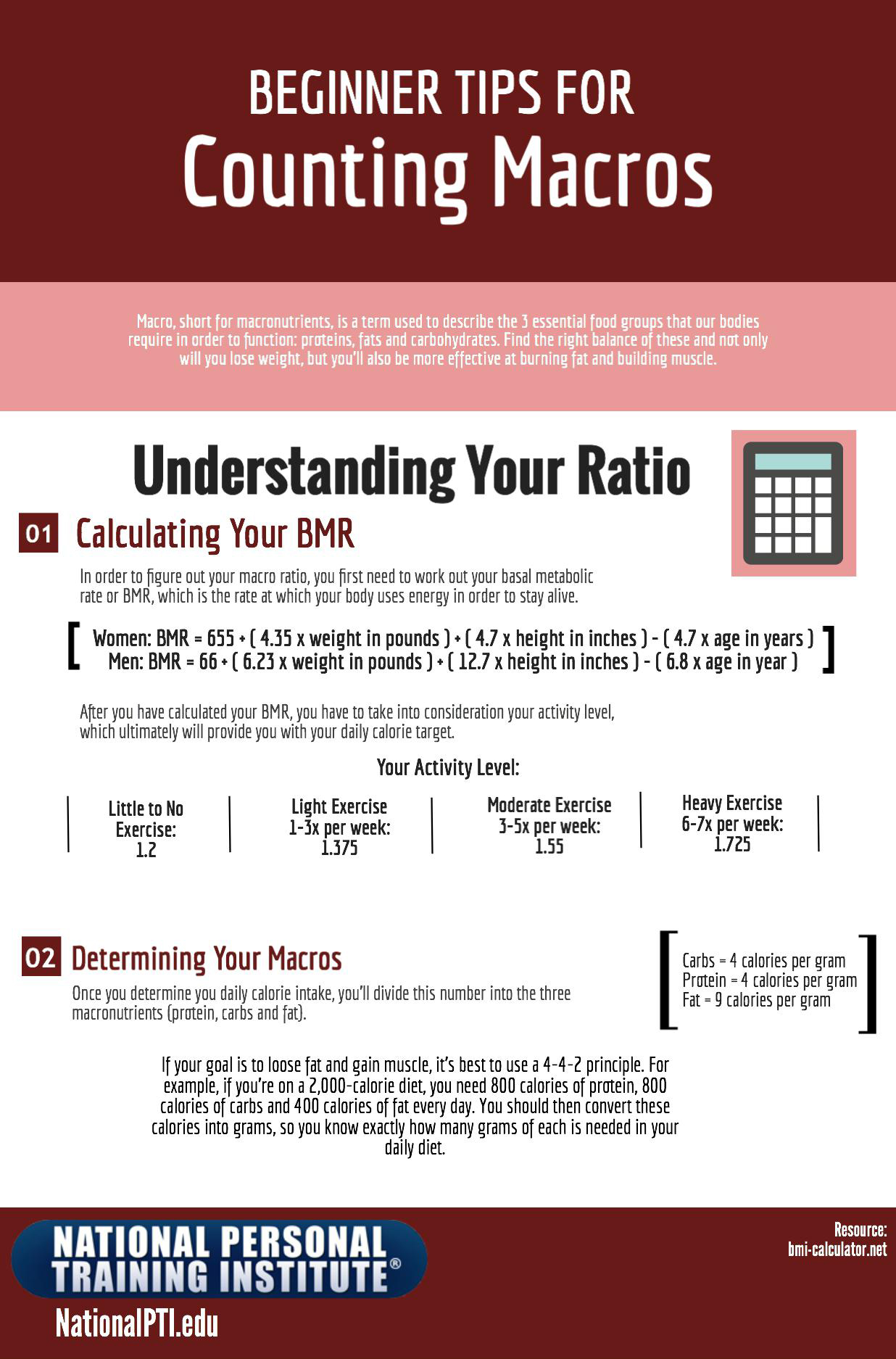Have you heard of the new dieting strategy called “counting macros?” In reality it’s not new, in fact it’s the way many in the fitness industry have been eating for years, acknowledging that not all calories are created equal. Macro, short for macronutrients, is a term used to describe the 3 essential food groups that our bodies require in order to function: proteins, fats and carbohydrates. Find the right balance of these and not only will you lose weight, but you’ll also be more effective at burning fat and building muscle.
While social media may make counting your macros seem simple and stress free, getting used to this new lifestyle can actually be overwhelming. Whether you’re a beginner or a few months in, here are some tips to help you be successful.
Understanding Your Ratio
In order to figure out your macro ratio, you first need to work out your basal metabolic rate or BMR, which is the rate at which your body uses energy in order to stay alive. After you have calculated your BMR, you have to take into consideration your activity level, which ultimately will provide you with your daily calorie target. Once you determine you daily calorie intake, you’ll divide this number into the three macronutrients (protein, carbs and fat). If your goal is to loose fat and gain muscle, it’s best to use a 4-4-2 principle. For example, if you’re on a 2,000-calorie diet, you need 800 calories of protein, 800 calories of carbs and 400 calories of fat every day. You should then convert these calories into grams, so you know exactly how many grams of each is needed in your daily diet.
Carbs = 4 calories per gram
Protein = 4 calories per gram
Fat = 9 calories per gram

Planning is Key
After some time counting your macros will become second nature to you. Until then, to stay on track from the beginning, plan out each meal in advance. There are apps available to help you meal plan. MyMacros+ and MyFitnessPal are both great apps to track and plan your daily intake.
Get the Most Out of Your Macros
Don’t cut yourself short! Planning your meals ahead of time will help you fit in as much food as possible into your daily-allotted macros. An easy way to do this is by opting for products without flavor or added sugar, then simply add your own. An excellent example is plain Greek yogurt; it has ¼ the amount of carbs as the flavored options and can taste just as good with added fruit or sweetener.
Seek Healthy Alternatives
Take your time while grocery shopping. Not all brands are created equally; many brands will have completely different macros for similar products. There are also low fat/fat free options of most products, and even low carb bread and wrap alternatives. Be willing to try healthy alternatives, for example unsweetened almond milk is much more macro friendly compared to skim milk.
Use Your Macros Wisely
Even though you could technically fit unhealthy foods into your macro ratio, doesn’t mean you should. It’s important to eat wholesome, healthy foods, in order to ensure that you’re getting the proper amount of vitamins, minerals and fibers needed. The majority of your food should be from nutritious sources. However, if you plan strategically, you can still factor in a slice of pizza or candy every once in a while without going over your budget.
Invest in a Kitchen Scale
A kitchen scale will quickly become your best friend. Measure out your food yourself, in order to alter or create your own serving sizes, doing so will make it easier to fit things perfectly within your macros. Measuring out your food yourself is also a great way to ensure that you’re actually consuming the correct serving size listed. For example, the serving size for crackers may be “15 crackers (20g).” After weighing it out, you may find that you can actually have 20 crackers because you are tracking based on the actual grams of the food.


